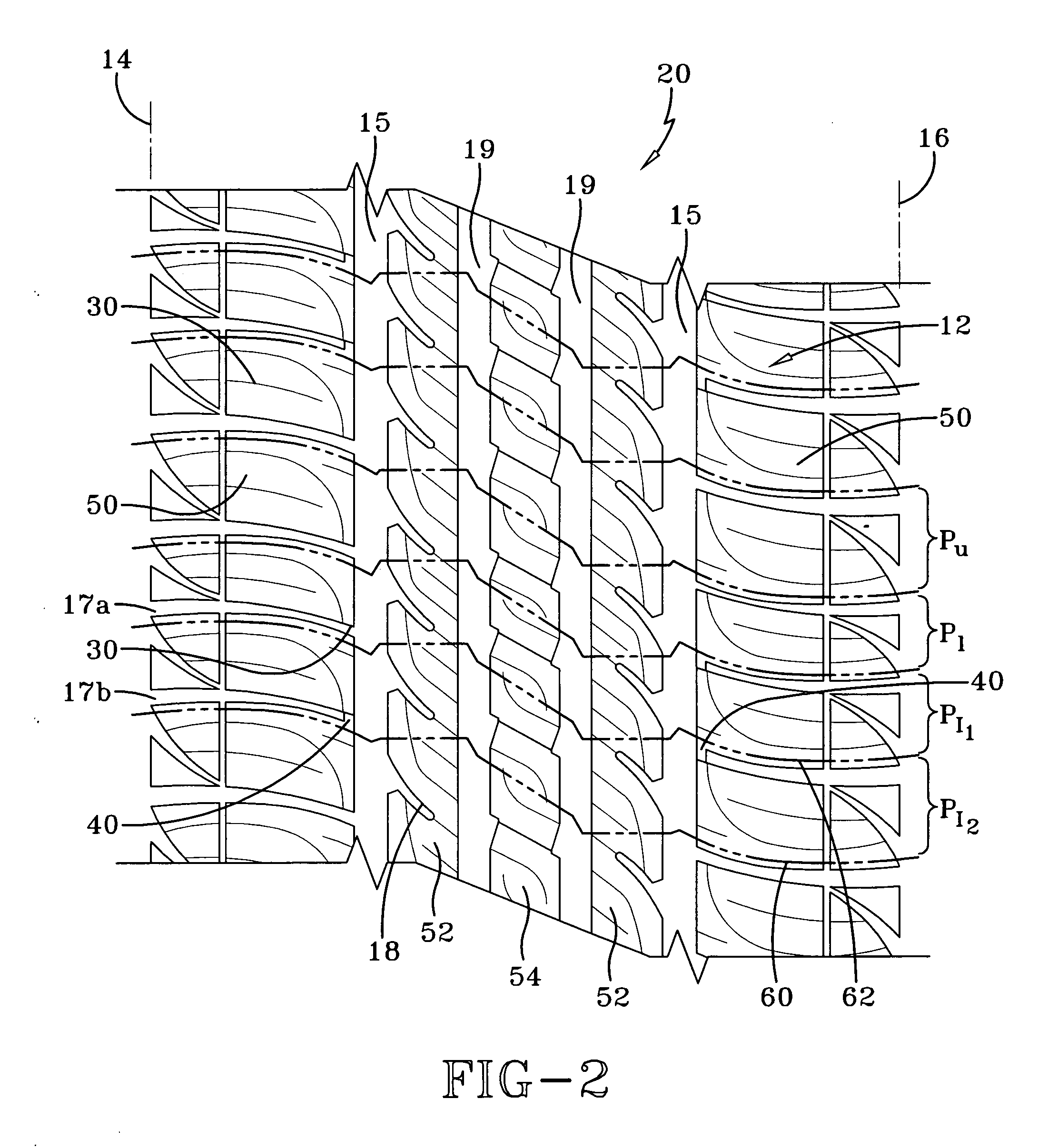Continuous variable pitching methods
a continuous variable and pitching technology, applied in the field of reducing tread pattern noise, can solve the problem that the majority of vehicle noise is created, and achieve the effect of satisfying the noise power spectrum
- Summary
- Abstract
- Description
- Claims
- Application Information
AI Technical Summary
Benefits of technology
Problems solved by technology
Method used
Image
Examples
Embodiment Construction
[0037] In FIG. 1, an exemplary tread 12 according to the present invention is illustrated. The tread 12 when configured angularly as when attached to a tire 10 is adapted to rotate about an axis R.
[0038] The tread 12 extends circumferentially about a tire 10. The tread 12 extends laterally between a first and second lateral edge 14 and 16, respectively. The tread 12 has a plurality of road contacting relief elements hereinafter called tread elements 50. The tread elements 50 are positioned on the tread in a pattern commonly referred to as the tread pattern. The tread elements 50 are separated by grooves 15, 17a, 17b, 18 and 19.
[0039] The tread elements 50 are defined by circumferential grooves 15, 19 and lateral grooves 17a, 17b, 18. The center of the tread can have relief elements that can include circumferential ribs 52, 54. Typically a rib 52, 54 may be a zigzag configuration, straight or sinusoidal in shape. Whether the tread elements 50 are block elements or a combination of ...
PUM
| Property | Measurement | Unit |
|---|---|---|
| noise power spectrum | aaaaa | aaaaa |
| lengths | aaaaa | aaaaa |
| length | aaaaa | aaaaa |
Abstract
Description
Claims
Application Information
 Login to View More
Login to View More - R&D
- Intellectual Property
- Life Sciences
- Materials
- Tech Scout
- Unparalleled Data Quality
- Higher Quality Content
- 60% Fewer Hallucinations
Browse by: Latest US Patents, China's latest patents, Technical Efficacy Thesaurus, Application Domain, Technology Topic, Popular Technical Reports.
© 2025 PatSnap. All rights reserved.Legal|Privacy policy|Modern Slavery Act Transparency Statement|Sitemap|About US| Contact US: help@patsnap.com



